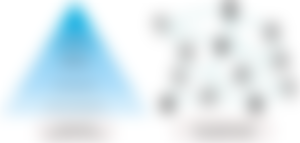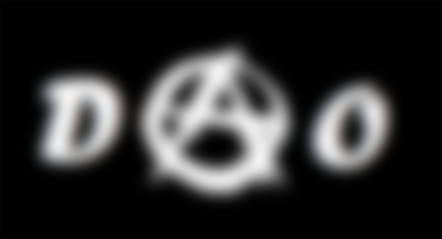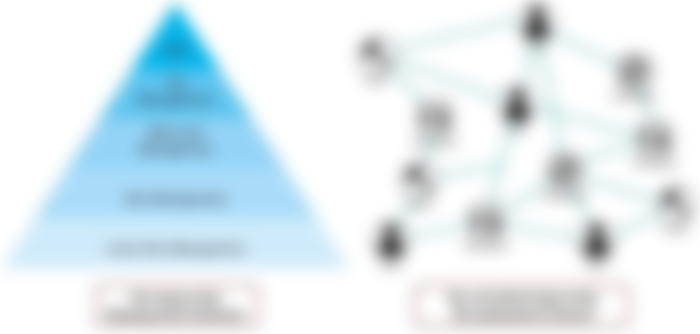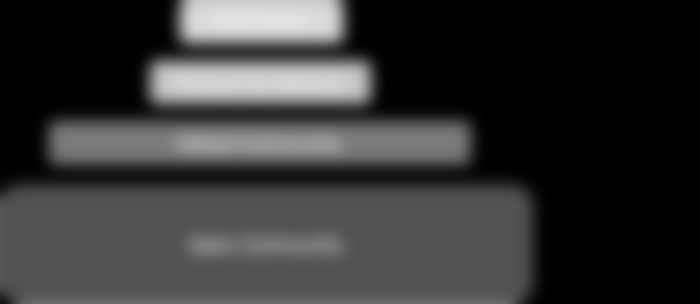DAO, the Social Structure of Cryptoanarchism

Anarchy is not chaos. Anarchism is not what they have been taught at school.
The word “anarchy” derives from the Greek “ἀναρχία” which means “without”, “power” or “mandate”, that is, “absence of authority”, understanding by authority to an entity or central person, or concentrated power in a few.
Anarchy promotes the free market between people, with voluntary agreements, without the imposition of a central authority that controls everything. Anarchism promotes the abolition of the State.
Anarchy is the government of all, and from each one for himself. It requires personal maturity and autonomy without expecting anything from a “benefactory state” that “protect” some plundering the production of others. The State is considered immoral in its violent actions, which takes over the private property of people.
Cryptoanarchism is a stream of anarchist thought that focuses on the protection of privacy, political and economic freedom, whose adherents are shown in favor of the use of cryptography to achieve social change.
The Movement was founded by the US engineer Timothy C. May in 1988 with the publication of the “Manifesto Cryptoanarchist”.
In the Cyphernomicon, May pointed that:
What emerges from all this is not clear, but I think it will be a form of an anarchcapitalist market system that I call “cryptoanarchy”. Cyphernomicon, section 2.3.4.
The cryptoanarchists point to the goal of creating cryptographic software that is used to avoid persecution and state invasion. Cryptoanarchism is described by Vernor Vinge as the cyberspace realization of anarcocapitalism, although it is not a consensual vision.
The world in which we live today, has the Internet as part of our habitat. We spent connected most of our time and we do part of our work on the Internet. People trade, socialize, relax, and sometimes, even, get married online.
Thus, disruption is around the corner, so that people can be organized by computer code, and make electronically instrumented decisions, with very low cost and online speed.
A traditional organization is structured in the form of hierarchies. The Board of Directors, Management and Employees. Each of these people has a different level of power, where employees are those who have little or no level of power.
A DAO (Decentralized Autonomous Organization) is an organization that is governed by intelligent contracts in the block chain, automatically executing pre-established conditions, imitating any real-world contract.

As a result, the government structures of a DAO is totally transparent and auditable, compared to the government of the traditional company. Nor do we talk about public corruption in state governments.
The difference of a DAO, with a traditional company, is that its structure is decentralized and does not have the figure of central authority. Daos are democratic, because they are prepared for broad participation in decision-making. The tenure of governing tokens enables that participation.
With the use of these computer structures, the identity of a participant in an organization can be instrumented from the pseudonymy, and this is useful for a large number of participants, when it is necessary to maintain privacy without vulnerating property.
It is difficult to say what national laws would be ignored, since even the location of a given user would be unknown. In a certain sense, the encryption of anonymous networks (the “cypherspace”, “encrypted space”) can be considered as an independent territory, without a public law of a given jurisdiction. It is a study issue, for jurists and it is not the idea to treat it in this article. In fact, a DAO, for being a global organization without a physical headquarters, is a non-explored legal structure.
In July 2021, Wyoming became the first state to recognize the DAO as a legal entity, after Wyoming’s DAO bill will enter into force. This means that the DAOs that are recorded in the State of Wyoming are legally recognized as commercial entities in the United States and, therefore, would receive the same legal protections as a limited liability company.
In the recent Russian invasion of Ukraine a DAO was formed to raise funds for Ukrainian soldiers who face the Russian army, and was named Ukraine Dao.
Participants can voluntarily create private laws in the working status, using intelligent contracts, where personal identity depends on online reputation. Here the DID (decentralized identity) takes importance, and is an even in growth institution, where DAO can choose to choose, within the crypt offer.
The concept of decentralization has fostered the idea of trust and, with the damage the fraud is minimized in the actions of the people who form the organization, where each transaction is registered immutable in the block chain.
A long and arduous process is not required to accept innovations without a central authority. With the DAO, innovations do not need to go through different hierarchies before reaching those who have the authority to make decisions.
The damage could be vulnerable to errors, and if they are pirated, the economic consequences can be catastrophic, and this is a weak point that must be careful.
There are no commercial secrets. Since all in the intelligent contract is encoded in the block chain and it is transparent, it can be copied.
The structure of a DAO can be varied, in form and number of participants. A classic structure can be presented like this:

Final words
The traditional organization makes sense in hierarchical structures, ideal for centralized government that promotes statists.
If we want to evolve from political power towards social power, where individuals have direct participation, without being considered mere numbers of a power structure, the damage provides the proper tool in the Blockchain.
The damage allows the direct and individual vote of its participants, and that is its strength.
The enclosures that the authorities have imposed on the declared Pandemic of the COVID-19 has left us a damaged economy and many employers and workers who feel used and without voice.
It is not clear if traditional systems will change or how soon they will do it, but DAOs have shown a clear path to better working conditions and staff management.
I must be honest and admit that not all kinds of structure should be decentralized, and a DAO does not solve any governance problem, but it can provide a solution for many systems both public and private, where at least, part of them can be decentralized.
For these reasons it is necessary to take decentralization to private and public governance.
In a previous article I explained the DAOS: “Decentralized Autonomous Organization (DAO): The Brief History, Challenges, and Lessons Learned”, And in a next one about governance: Defining Decentralized Governance and the Multitude of Different Models”.
...


